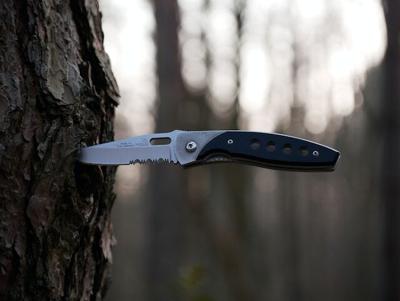A folding knife is an essential tool that is useful in a variety of situations. Whether camping, hiking or needing a reliable tool for everyday use, a good folding knife can be a valuable belonging. However, with so many options on the market, choosing the right folding knife can be daunting.
A thorough understanding of knives is the best strategy for finding the best one. Here are ten things to consider when buying a folding knife.
Blade Material:
The blade is the most important part of any knife, and the material it is made of determines its strength, durability, and performance. Common materials for knife blades include stainless steel, carbon steel, and high-carbon stainless steel. Stainless steel is resistant to corrosion and is easy to maintain, while carbon steel is more durable and can hold a sharper edge. High-carbon stainless steel combines the benefits of both materials.
Blade Shape:
The shape of the blade defines its intended use. For example, a drop-point blade is great for general-purpose use, while a clip-point blade is ideal for piercing and slicing. A tanto blade is designed for heavy-duty tasks, and a serrated blade is useful for cutting through tough materials like rope and leather.
Blade Length:
The length of the blade typically depends on your intended use. A longer blade is ideal for heavy-duty tasks, while a shorter blade is more versatile and easier to control. A blade length between 2.5 and 3.5 inches for everyday carry is ideal.
Locking Mechanism:
A locking mechanism is essential for a folding knife's safety. There are several types of locking mechanisms, including liner locks, frame locks, and back locks. A liner lock is easy to operate with one hand and is reliable, while a frame lock provides a secure lockup and is more durable. A back lock is the most traditional locking mechanism known for its strength and reliability.
Handle Material:
The handle material determines the knife's grip, comfort, and durability. Common materials for knife handles include wood, metal, and synthetic materials like G10 and Zytel. Wood handles are classic and comfortable, while metal handles are durable and easy to clean. Synthetic materials offer a combination of grip, durability, and affordability.
Handle Design:
The handle design is essential for comfort and control. A good handle should fit comfortably in your hand and provide a secure grip. A textured or contoured handle can provide additional grip, while a finger groove or choil can provide better control.
Blade Edge:
The blade edge determines the knife's cutting ability. A plain edge is ideal for general-purpose use, while a serrated edge is better for cutting through tough materials. A partially serrated edge combines the benefits of both types of edges.
Opening Mechanism:
The opening mechanism is important for ease of use and convenience. There are several opening mechanisms, including thumb studs, flipper tabs, and thumb holes. A thumb stud is the most traditional opening mechanism and is easy to use, while a flipper tab allows for quick and easy opening with one hand. A thumb hole is a versatile opening mechanism that is easy to use with either hand.
Weight:
The weight of the knife assesses its ease of use and portability. A heavier knife is more durable and can handle heavy-duty tasks, while a lighter knife is more comfortable to carry and use for extended periods.
Price:
The price of the knife depends on its quality, features, and brand. A high-quality knife with advanced features and a reputable brand will typically cost more than a basic knife from an unknown brand. It is important to balance quality, features, and price to find the best folding knife.



(0) comments
We welcome your comments
Log In
Post a comment as Guest
Keep it Clean. Please avoid obscene, vulgar, lewd, racist or sexually-oriented language.
PLEASE TURN OFF YOUR CAPS LOCK.
Don't Threaten. Threats of harming another person will not be tolerated.
Be Truthful. Don't knowingly lie about anyone or anything.
Be Nice. No racism, sexism or any sort of -ism that is degrading to another person.
Be Proactive. Use the 'Report' link on each comment to let us know of abusive posts.
Share with Us. We'd love to hear eyewitness accounts, the history behind an article.